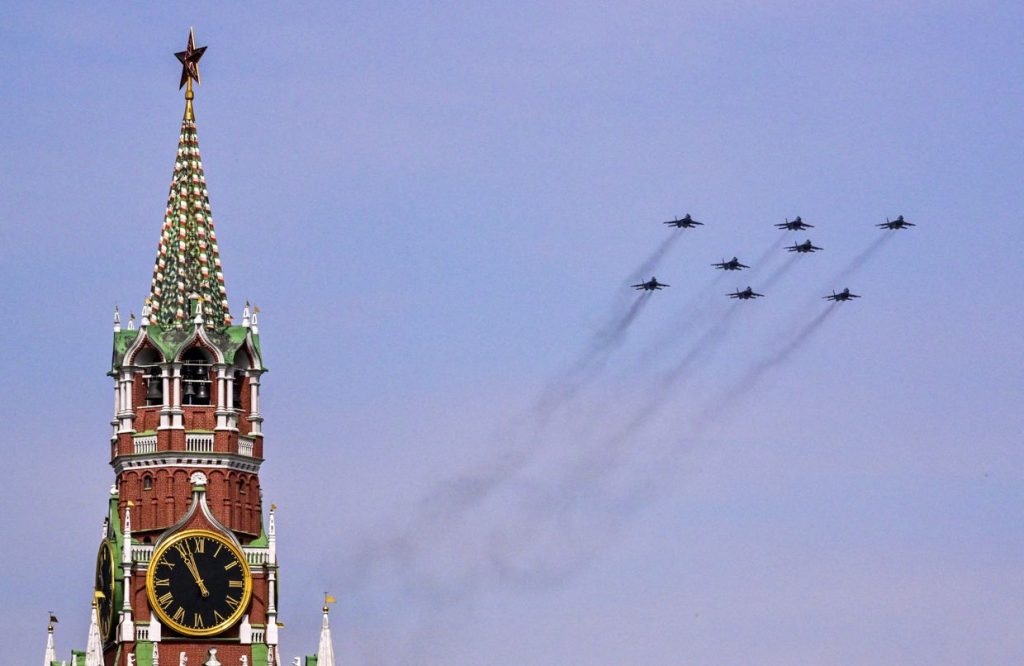Two Russian MiG-31K jets were recently transferred to Belarus but are believed to have returned to Russia shortly after their arrival, according to the Belarusian monitoring group Hajun. The jets, capable of flying at speeds of up to 3,000 kilometers per hour and launching Kinzhal missiles with a range of 2,000 kilometers, landed in Belarus on October 9 and 10. The sudden appearance of the jets in Belarus raised concerns among Ukrainian officials and military experts, who speculated that Russia may have moved the aircraft to Belarus to evade potential Ukrainian strikes or to prepare for an attack. Russia reportedly had 12 MiG-31 jets in service at the beginning of the full-scale invasion, but Ukrainian drone strikes on the Savasleyka airbase in August resulted in the destruction of at least one MiG-31 and potential damage to another.
The potential transfer of the Russian MiG-31 jets to Belarus may indicate Russia’s efforts to protect its warplanes from escalating Ukrainian strikes on Russian air bases. The absence of the jets from Belarus since April 2023 raised eyebrows when they suddenly appeared in the country, prompting speculation about Russia’s motives. The ability of the MiG-31K jets to launch Kinzhal missiles with a range capable of putting all of Ukraine at risk adds to the concerns surrounding their movements. The jets’ departure from Belarus shortly after their arrival suggests a strategic decision by Russia to safeguard its assets, possibly in response to the threat of Ukrainian strikes on Russian military infrastructure.
The Belarusian monitoring group’s report that the MiG-31K jets did not return to the Machulyshchi airfield after takeoff but instead flew towards the Russian Federation indicates a likely return to Russian territory. The jets reportedly flew past Baranovichi and then headed east, back to Russia. This development aligns with the speculation that the jets were only temporarily stationed in Belarus and may have been moved there as a tactical maneuver to mitigate the risk of Ukrainian attacks. The timing of the jets’ transfer and subsequent return highlights the fluid and volatile nature of the conflict between Russia and Ukraine, with both sides engaging in strategic moves to gain the upper hand in the ongoing conflict.
The implications of Russia’s potential decision to transfer and then retrieve the MiG-31K jets from Belarus underscore the complex geopolitical dynamics at play in the region. The movement of advanced military aircraft between neighboring countries signifies the escalating tensions and strategic calculations being made by both Russia and Ukraine in the context of the ongoing conflict. The ability of both countries to deploy and potentially relocate high-speed, long-range aircraft with precision weapon systems speaks to the high stakes involved in the conflict and the importance of securing military assets to assert dominance in the region. The MiG-31K jets’ return to Russia highlights the fluid and dynamic nature of the military engagements and strategic considerations shaping the conflict in Eastern Europe.
In light of the reported destruction of at least one MiG-31 jet during Ukrainian drone strikes on a Russian airbase in August, the decision to transfer the remaining jets to Belarus and then return them to Russia reflects a strategic response to safeguard valuable assets. The vulnerability of advanced fighter jets to precision strikes underscores the need for both Russia and Ukraine to adapt their military strategies and operational deployments to mitigate the risk of losing critical military capabilities. The movement of the MiG-31K jets between Belarus and Russia highlights the ongoing efforts by both sides to outmaneuver each other and maintain a tactical advantage in a rapidly evolving and volatile security environment. The return of the jets to Russian territory suggests a calculated move by Russia to protect its military assets and maintain its ability to project power in the region.


